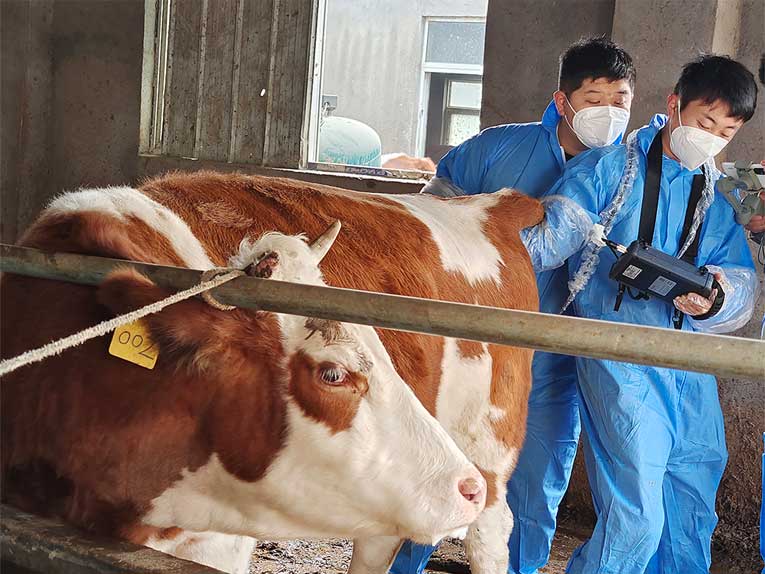Using a Bovine Ultrasound Machine for Pregnancy Tests Those who choose the Bovine Ultrasound as a way to give pregnancy tests to cattle should follow these method steps:
1. before starting, charge the device batteries and have spare batteries available.
2. the device should be set up and the screen adjusted to optimize the image and improve reading accuracy. Direct sunlight can make screen interpretation difficult, so if the facility is located outside and uncovered, it is often necessary to place a temporary structure (e.g., tarp) over the screen to aid in reading results.
3. Veterinary grade plastic covers should be worn. Ultrasound is usually performed using the left arm as described in the palpation section.
4. Veterinary grade latex gloves may be worn over the cuff arm. Attaching the plastic sleeve to clothing helps to ensure that the sleeve is correctly positioned and secured. A pair of forceps, clamps or rubber bands work well.
5. apply lubricant to the probe each time you palpate; the lubricant helps get an accurate image on the screen and aids insertion into the cow.
6. gently insert the hand and probe into the rectum, and once inside, apply firm but gentle pressure to the rectal floor. Slow, gentle sweeps from one side to the other will help you obtain pictures of the uterine environment, reproductive structures and pregnancy.
7. In most cases, it is not necessary to change sleeves and gloves on each cow. However, if blood or other discharge is found on one cow, change the sleeve immediately before ultrasound is performed on the other cows. Some diseases, such as anaplasmosis and lymphoma, can be spread by fluids on the sleeves and probes. When ultrasound is performed on a herd with these diseases, the sleeves should be changed for each cow and the probes should be cleaned with a mild disinfectant and rinsed with water between each cow. To promote good herd health and management practices, consider changing sleeves regularly to reduce the incidence of disease transmission. Replace torn sleeves immediately.
8. Most producers choose to mark cows’ rumps with chalk or bleach to help categorize cows after pregnancy testing. For example, straight lines on either side of the rump can be used to indicate pregnant cows, while an “O” can be used to designate a cow that has not given milk.
9. Record information about animal identification and pregnancy status and summarize it on a record sheet of your choice.
Post time: Apr-03-2024




